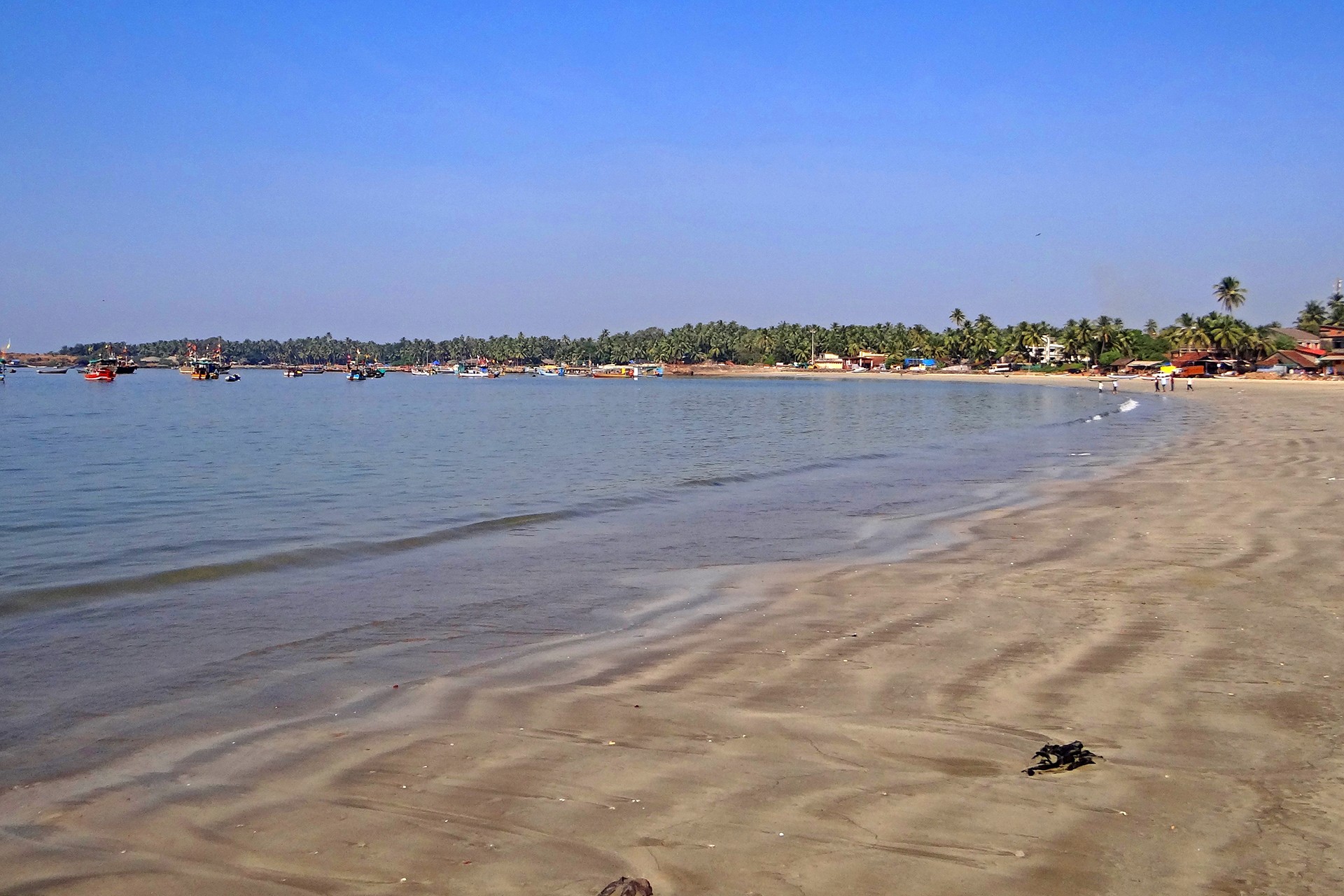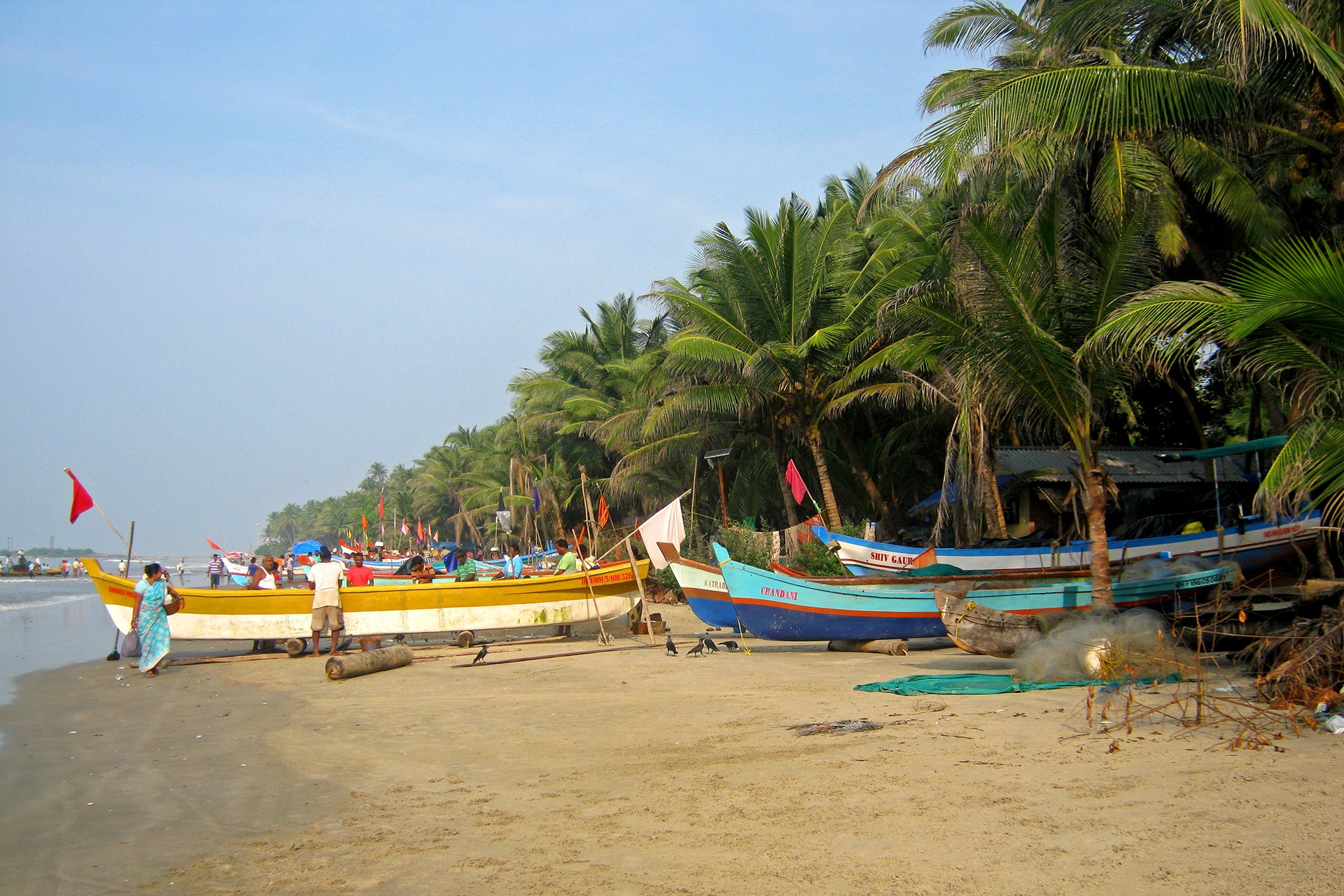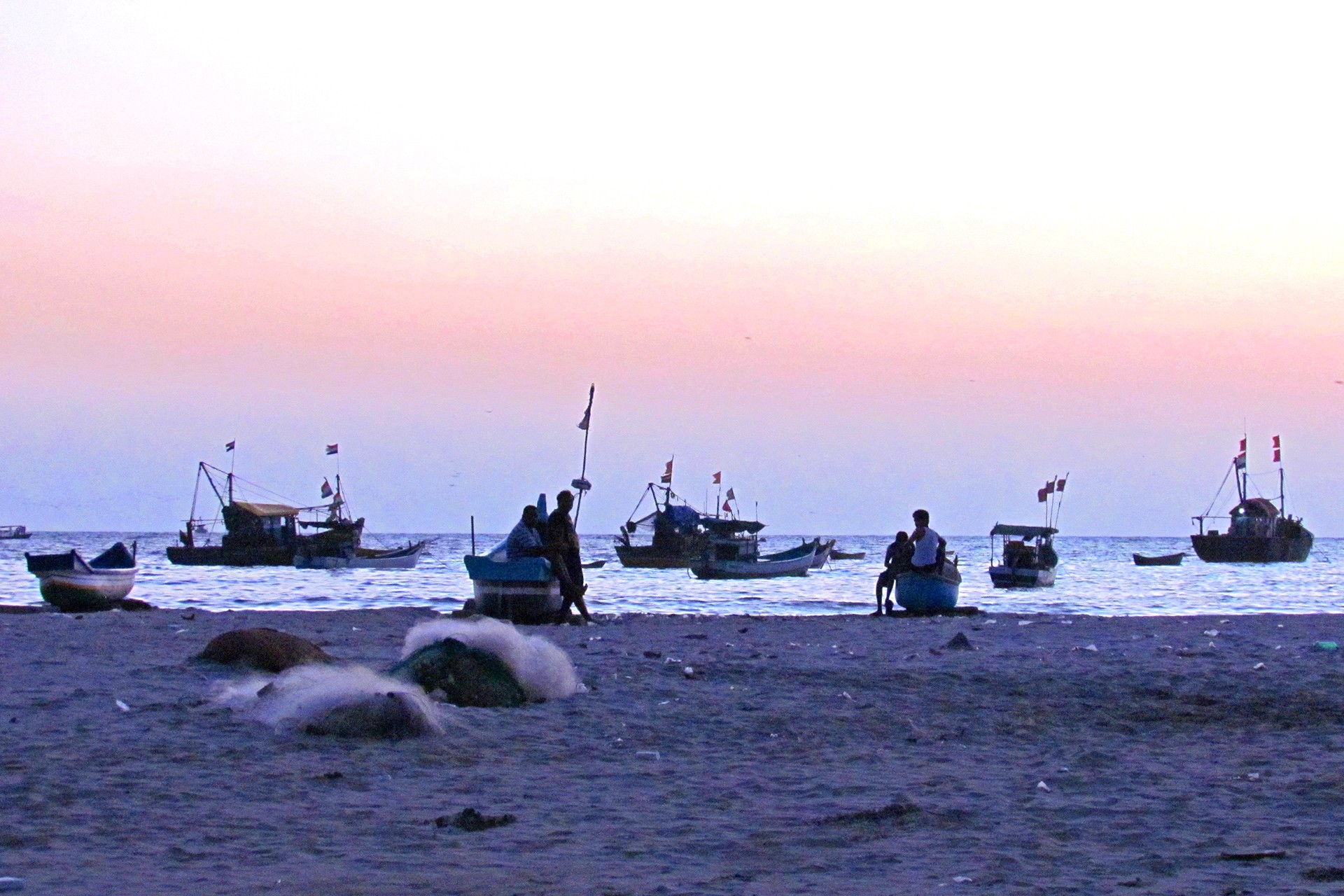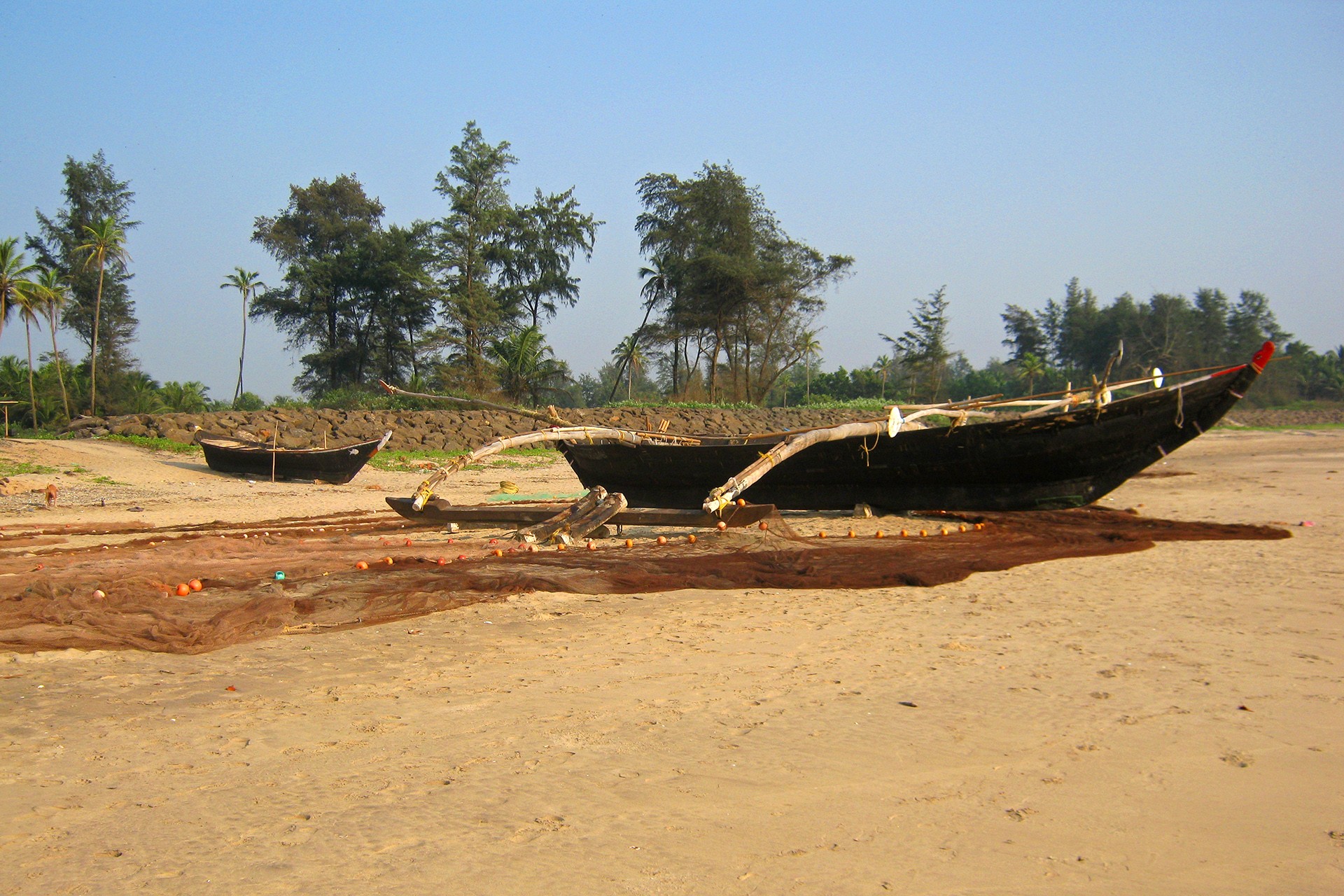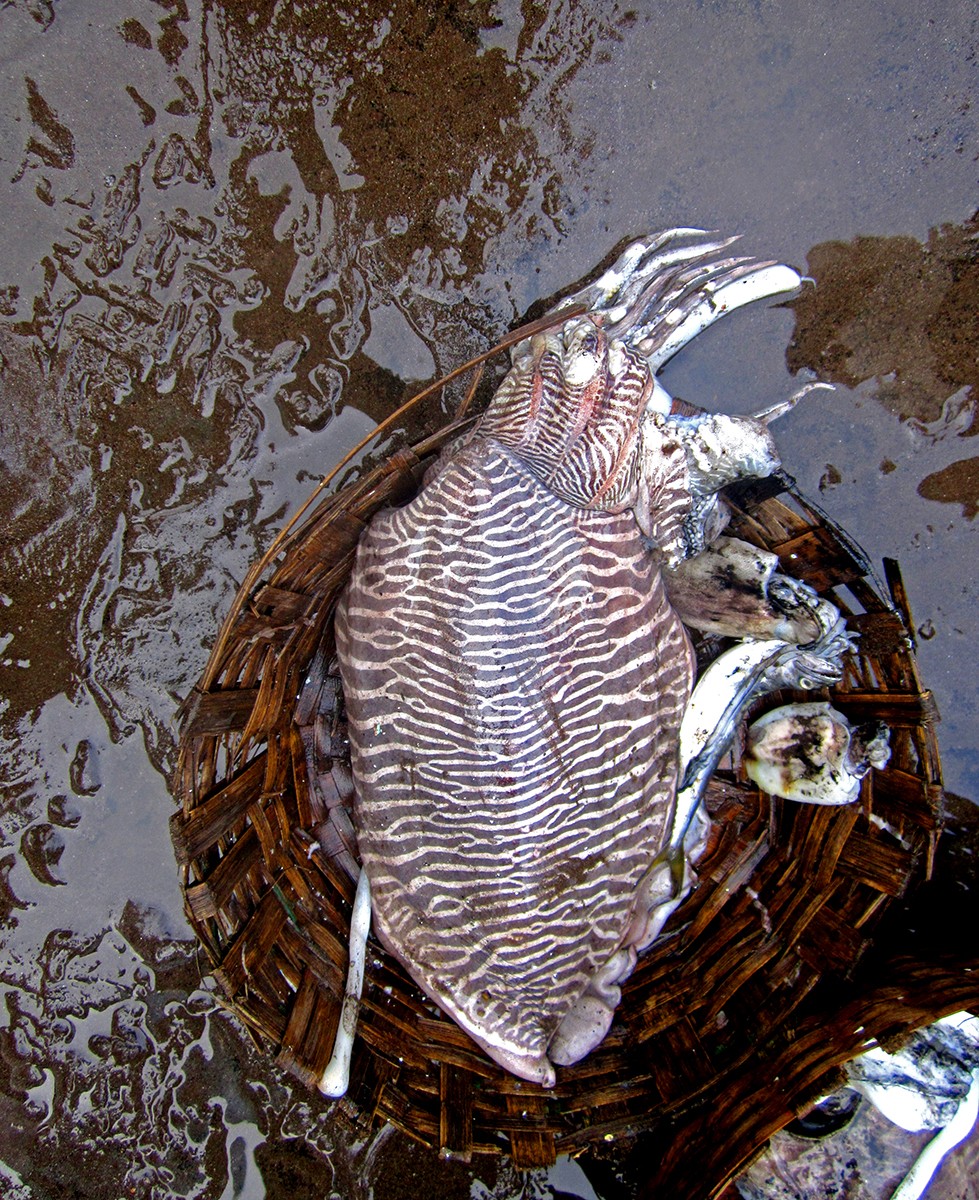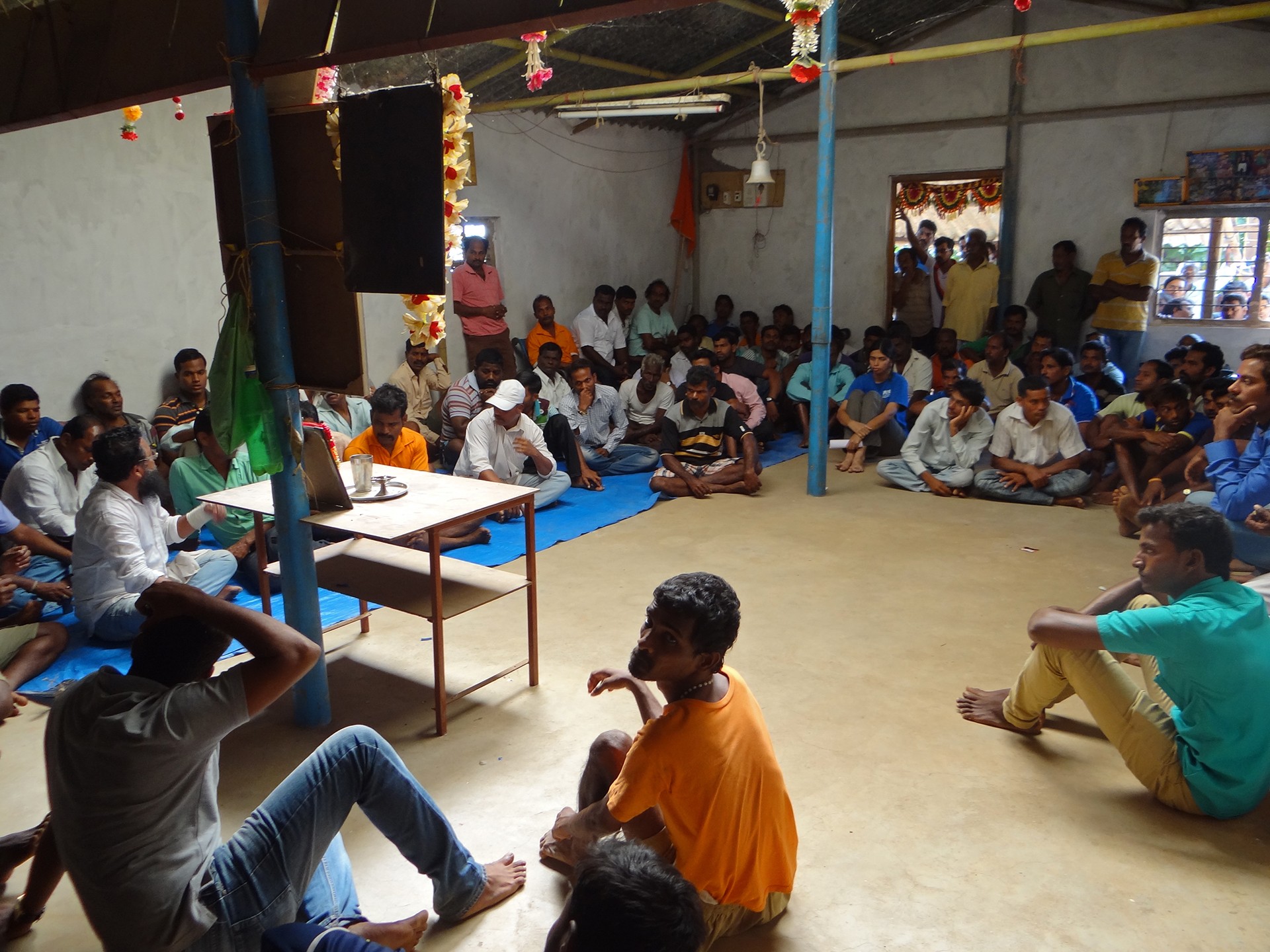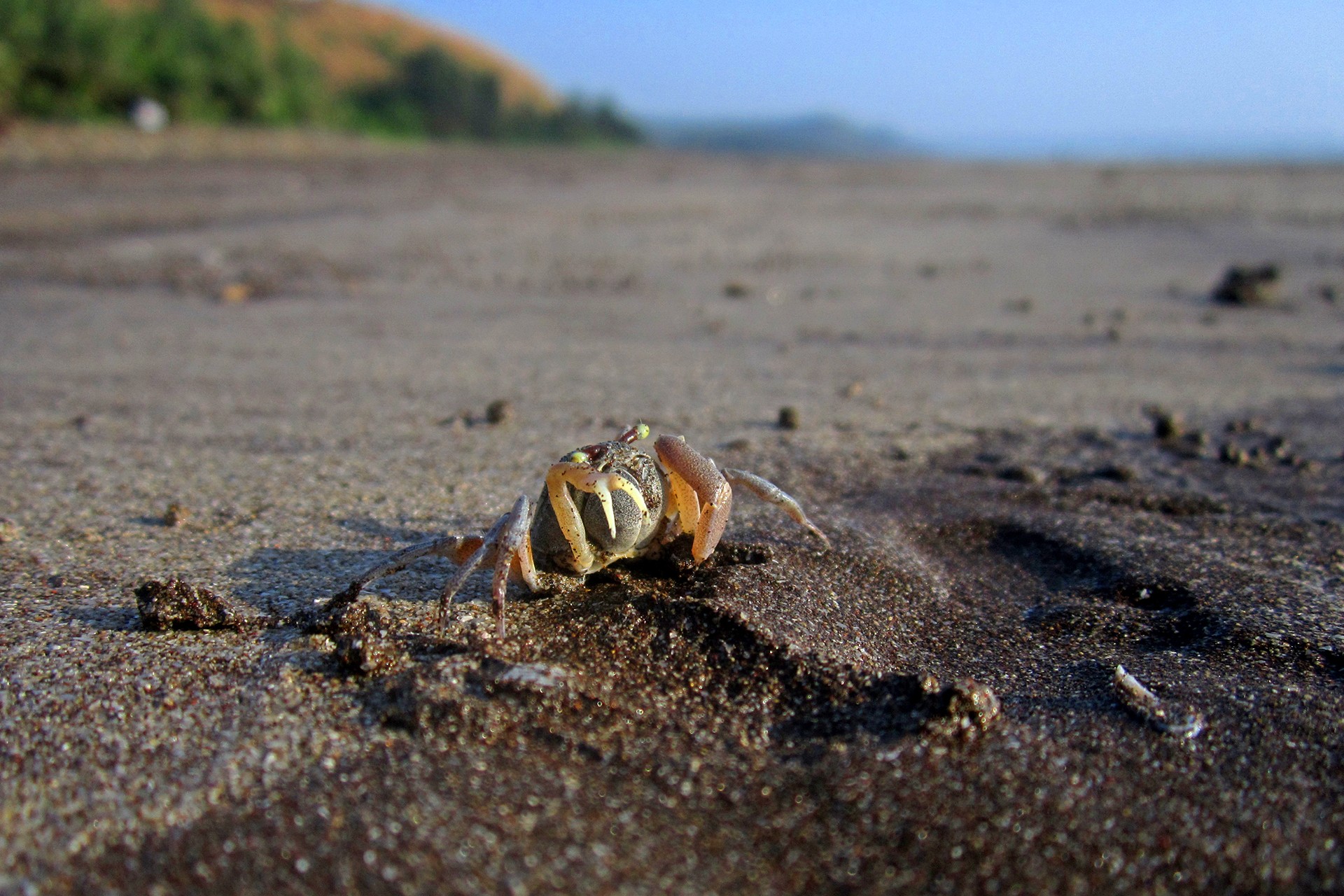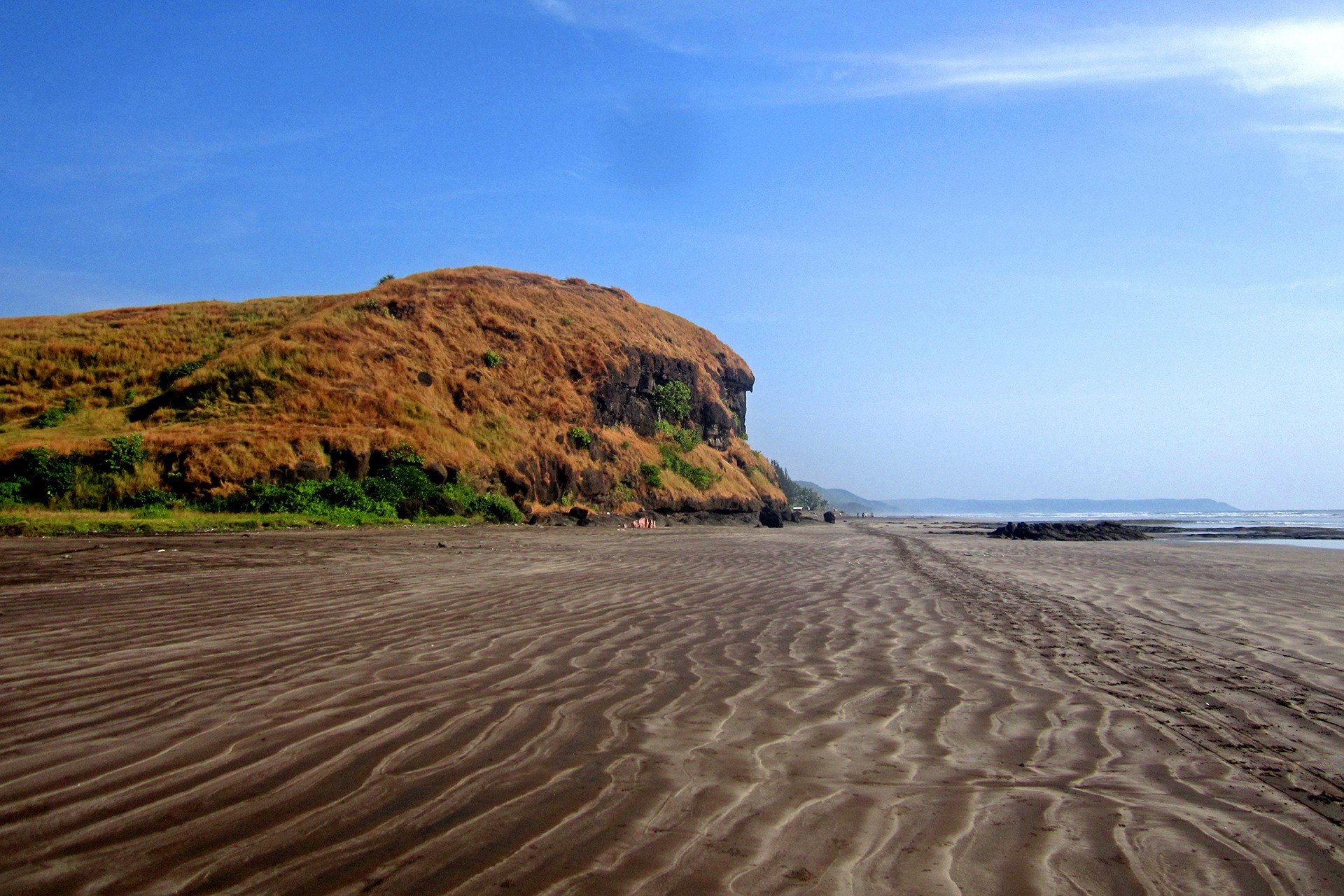The sound of the sea must haunt fishermen’s dreams. Born into a life of perpetual motion, neither fully on land nor in the ocean, the sea defines every aspect of their being. What can a fisherman do, besides keep to its rhythms of ebb and flow? Where he lives, what he eats – the sea dictates even when he sleeps. Is it possible, then, to imagine a world where fishermen don’t care about the sea? Research suggests that fishing is the most immediate, important threat to life in the oceans. What is missing in such research is the role of fishermen. Is it fair to assume that as perpetrators of fishing, fishermen are willing drivers of environmental destruction, greedily reaping rewards at the cost of the sea? My research leads me to think otherwise.
2014: My interest in fisheries management takes me to fishing villages in the Sindhudurg district of Maharashtra. I have been involved in research on fisheries in Sindhudurg since 2011. After the monsoon, the coast here is lush and beautiful, like Goa before the tourism rush. Starting from Malvan town, I head south to speak to fishermen in their homes. There isn’t a house, in the first fishing village I visit, where the waves can’t be heard, despite the greenbelt of coconut and cashew that hides the sea from view. Under the mid-morning sun, I visit the home of a fisherman, built from the local lateritic stone or chira, surrounded by a small, sandy yard containing one goat tethered to the fence, and four or five nets strewn about. Picking my way around the nets, I look for R. Dhuri, the man with whom I had an appointment. “He is out,” his wife says. “Go look for him at the temple, all the fishermen are there.” I realise that the crash of waves seems especially deafening on this day, and mention it to the lady. “It’s because none of the men are here. They are having a meeting at the temple,” she said.
Fisheries, like the ones in Sindhudurg, are notoriously difficult to manage. It is simply not possible to divide the sea into bits, assign each bit an owner and expect civilised sharing of multiple, mobile resources. Water flows, fish migrate, plankton blooms drift along currents – such a world of continuous activity does not take well to static boundaries drawn on a map. Yet such static boundaries have been officially drawn in Indian waters. Broadly, India’s marine territory is divided into territorial waters, which are managed by state governments, and the contiguous zone and exclusive economic zone, managed by the central government. The territorial waters extend to 12 nautical miles from the coast, the contiguous zone extends from 12 to 24 nautical miles, and the exclusive economic zone extends from the edge of the contiguous zone to 200 nautical miles. India’s fisheries policy devolves authority to the states within territorial waters, and different states have developed different state fishing laws. However, no state has the authority to deny prima facie, the use of their waters by an Indian citizen from another state. This creates legal loopholes, with fishermen crossing state boundaries and claiming ignorance about the adjacent state’s laws. In addition, policing state waters is difficult since the fisheries department itself does not have the authority to arrest wrong-doers, and depends on co-ordinating their activities with the marine police within territorial waters and the coast guard in the contiguous zone. The apparent lack of coordination in efforts between these government departments leaves the fisheries effectively unmonitored. India’s marine resources lie unguarded and ripe for exploitation.
Scientists, politicians and managers have grappled with this problem for decades, coming up with a variety of solutions that have been implemented in some form or other across the world. Solutions such as ecosystem-based management and co-management have been suggested for India. Sadly, there is no cure-all. Fishermen rally against being excluded from using marine protected areas, fisheries consolidate and economically marginalise the majority of fishermen under the private property systems of individual transferable quotas. Individual transferable quotas involve limiting catches of a single species per capita in a single fishing ground. Therefore, that quota becomes the property of an individual fisherman, which he can then sell to others, if he chooses not to fish himself. Such systems have not been implemented in multi-species fisheries, like those of India. Instead, India’s fishing laws focus on regulating the types of nets and other fishing gear being used, the types of vessels and engines used, and where different fishing practices can be used. Still, these laws are regularly flouted, and official fisheries management across the nation is harangued by poor enforcement and compliance. A more acceptable solution to sustain fisheries in the long-term, according to many global experts, is local management evolved by fishing communities.
In this context, I am curious about the meeting at the temple. The temple is a ten-minute walk away, on the beach and overflowing with fishermen. The crowd extends outside the doorway and those gathered near the windows, including Mr Dhuri, are not only from this village but also from surrounding villages. The hot noon sun, combined with the mass of people, has turned the inside of the temple into an oven. The physical heat reflects the heated arguments inside, over permission to use a particular type of net called the purse-seine in the waters close to the village. A purse-seine is a large nylon or plastic net set using a boat, around a school of fish. The bottom of the net is then drawn together such that it resembles a purse around the school of fish. The net is typically so large that boats require hydraulic equipment to haul the heavy, fish-laden net back into the boat. However, fisherfolk in Sindhudurg have improvised and devised a smaller version of the purse seine that they call mini-purse, which can be set and hauled in by hand. A typical mini purse operation employs 20-30 people, and in doing so differs from a purse seine, which replaces this manpower with hydraulic equipment. Despite the name, mini-purse seines are not necessarily smaller operations than purse-seines. Their catches may go from half to almost the same as the purse seines that operate in Ratnagiri.
The purse seine has been a controversial fishing technology all along the Indian coastline. The purse seine works when the location of a school of fish is known, and then the net is set encircling the entire school, with the bottom drawn in to form a purse. Compared to traditional nets, which bring in small catches of multiple species, the purse seine brings in huge, single species catches, causing a glut in supply, forcing the value of that species downward. Known by various local and English names, including ring-seine and mini-purse, the purse-seine raked up trouble soon after its introduction in the 1980s. Starting in Kerala, various petitions have been heard by four High Courts and the Supreme Court of India, challenging the right to operate purse seines in Indian waters. In Maharashtra, fishermen from the neighbouring Ratnagiri district took legal action and challenged Maharashtra’s newly developing purse seine fishery, resulting in a judgement in 2004. This judgement empowered an advisory committee to deliberate on how many purse seines could be operated, where they could fish, where they could land and so on. But the committee’s deliberations were yet to translate into law in Maharashtra at the time of the fishermen’s meeting in Sindhudurg. The National Green Tribunal ruled on this matter in 2017.
Entering the temple requires passing both private and public interrogations. As a woman and an outsider, I am immediately an object of suspicion. When I finally enter the temple I notice that the room is set up to create an atmosphere similar to a court. The accused fishermen who used the purse seines are seated on chairs, while everyone else sits on the floor. This serves a dual function. While it appears that the accused are being treated with great respect, their elevated seat ensures that their faces are visible to all. The three people who interrogated me act as facilitators of the meeting. They call on specific people or groups to talk, saying things like, “We have not heard from the older fishermen,” or because the mini purses were being operated in shallow waters, the traditional territory of the shore seine, “Let those who use shore seines speak because this is something that will affect them the most.” The people being called to speak respond as if this was part of a procedure, a routine. The most significant moment is when a young fishermen accuses the purse seiners, “You know our rules, don’t tell me you don’t...” Rules! I am surprised! I have heard that these fishermen perform acts of non-cooperation, such as not working as labour on mini-purse vessels, but until now I didn’t understand these actions were treated and articulated as part of a system of rules.
Across India, groups of fisherfolk are sometimes known to create local fishing rules. In Gujarat and Tamil Nadu, this has taken the form of caste-based panchayats. In Kerala, fisherfolk created ‘sea courts’. Across the country, Christian fishing communities have based their rule making around the church, while Hindu communities based it around an important temple. For the most part, these local bodies dealt with issues of dispute resolution and determination of compensation. For instance, if practices like dynamite fishing are declared illegal, anyone caught using dynamite to kill and catch fish may be punished by preventing them from selling those fish at the local market. Studies of these fishing rules suggest that they are remnants of historical or traditional fishing practices. Studies also suggest that these sorts of local or customary fishing rules are dying out, due to the rapidly changing economics, technology and society of the fisheries. Yet here, a little village in Sindhudurg fishermen had created a set of rules to tackle new technology, i.e. the mini-purse, suggesting that their rule making was very much apace with current changes in economics, technology and society.
Despite the doom and gloom surrounding the state of India’s fisheries, with 84 percent of our fisheries either fully or overexploited, I find the fishermen at this meeting in a small village in Sindhudurg talking about sustainability, and the need to rein in individual greed for the overall benefit to the community. Their rules are made as much from a sense of social responsibility, to maintain the livelihoods of fellow fisherfolk, as they are from a sense of ecological sustainability. These fishermen speak about the perils of fishing juvenile fish, an issue that ecologists have been harping on for years, and encourage the younger generation to use fishing nets with mesh sizes that allow juveniles to escape. Older fishermen talk about species such as sea catfish, which are disappearing because although they live in the sea, they breed in estuaries and mangroves; both threatened ecosystems. They prefer fishing techniques that benefit the community, such as gill-nets and shore seines, which are operated by groups of fishermen, rather than trawl or purse-seines, which profit only the individual owners. There was nothing that any expert in ecology or scientist with a PhD, such as myself, could add to these statements. The fishermen said it all, on their own. Their elaborate systems of meetings to pass judgement, and innovative punishments, such as through social ostracism, are more effective than any laws of the state at this micro scale.
So, are such fishermen part of the problem or the solution? On one hand, they have developed a system of rules to prevent the use of large-scale, exploitative fishing gear, which they themselves monitor and enforce, imposing punishments on transgressors. On the other hand this solution operates at a very small scale, and is dependent on the culture and society of the particular fishermen who are part of that group. So, unfortunately, its very nature makes it difficult to scale up such community-based rule systems. What is clear is that these localised fishermen’s initiatives that dot the coastline of India, when taken together, add up to a potentially substantial movement by the fishing community towards sustainable fishing. There are clear opportunities for the government to engage with these community-based management initiatives and provide a policy framework for effective co-management. Our challenge is now to recognise, support and encourage these fishermen to continue to save their seas.
You can find more information about fishermen’s rule-making systems here.
